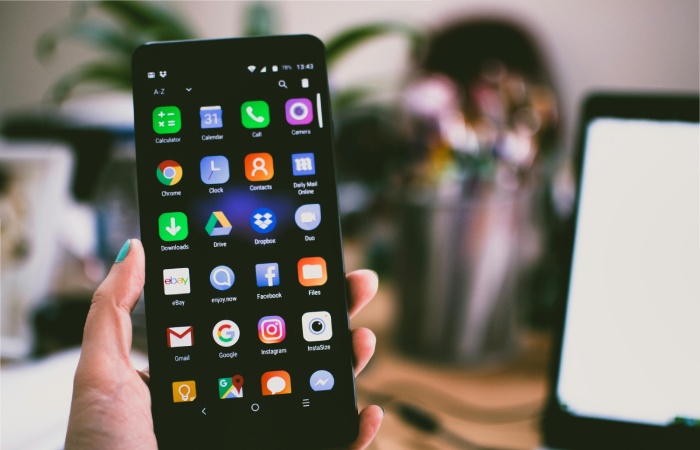Apps For Android: The exciting features that come with the applications pique the users’ interest. Apps make phones “smart” and, with their benefits, have radically transformed the way we operate today.
Expert programmers are busy designing and creating applications and integrating them with beneficial features. In this article, we will discuss the 5 Android app development fundamentals that you need to know before you start programming an Android app:
- Master the language
- Familiarity with appropriate application development tools and environment.
- Knowledge of application components.
- Awareness of fragmentation, Android apps, threads, loaders and tasks.
- Choose the right tools.
Do thorough research first Apps For Android.

Research is perhaps the most critical step in creating an Android software app.
However, many people skip this step altogether. They are so sure they have a great idea that they rush to implement it before someone beats them to it.
The question is: how do you know if this is actually a good idea?
Without a thorough understanding of the market, they cannot achieve this.
Take the case of the British taxi app Hailo.
Promoters mistakenly believed that taxi service in New York operated the same way as in London.
Hint: It wasn’t like that: Not only did the Big Apple’s famous urban network make it less necessary for drivers to rely on an app to find their way, but the competition was much fiercer than in Europe.
This allows you to observe current players in the niche, assess their strengths and weaknesses, and find ways to improve them.
At the end of your research phase, you should have an idea for an app your audience needs and that no competitor offers.
Basics of Android App Development
However, many small business are developing mobile apps in-house between useful development platforms and software programs that do much of the legwork.
Master the language Apps For Android
Java and XML are the main programming languages used in Android app development. Therefore, knowledge and mastery of these programming languages are prerequisites for developing an Android app. Some of the fundamentals of the Java programming language include:
- Packages
- Objects and Classes
- Inheritance and interfaces
- Strings and numbers, generics,
- Collections
- Competition
A good understanding of Java and XML will help you create/develop a more robust and elegant Android application.
Watch our Introduction to Android App Development video to understand the course.
Familiarity with the Right Application Development Tools and Environment
If you are starting Android application development, you must familiarize yourself with the build automation tools and the integrated development environment before developing your application.
You can use the Android Studio IDE or the Eclipse app for tools. They will help you learn the basics and many other things that will help you improve your code.
You can learn Apache Maven, Apache Ant, and Gradle as they provide a powerful toolset to help you manage your builds.
You must also become familiar with source control tools and concepts. Learn git and create a git-source repository (by creating an account on Bitbucket or GitHub).
To understand the basic concepts and terms of how the platform operates, you can use the Git Pocket Guide.
Knowledge of the Application Components Apps For Android
Application components are the essential components of Android application development. Each component constitutes a different point through which the system can access your application.
Although each of them exists as its entity and plays a specific role, some are dependent on each other, and not all of them are true entry points.
There are five different application components, each serving a different purpose with a distinct lifecycle that defines how it is created and destroyed. They understand:
1. Activities:
This component represents a single screen with a user interface (for example, an email application may have one activity that displays a list of new emails, another that composes emails, and another that reads them).
Activities work together to form a coherent user experience within the application. However, each of them is independent.
2. Service features:
A component runs in the background to perform work on remote processes or long-running operations. It does not provide a user interface (for example, it can play music in the background while the user is in another application).
3. Content Providers:
This is the component that manages a shared set of application data. With this component, data you store in the file system, on the web, or in an SQLite database can be viewed or even modified (as long as the content provider allows).
This component is also helpful for writing and reading data that is not shared and private to your application.
4. Broadcast Receivers:
This is the component that responds to system-wide advertisements. Most broadcast receivers come from the system, and although they do not display a user interface, they can create a notification in the status bar that alerts the user when a broadcast event occurs. It is usually a gateway to other components and does minimal work.
5. Activation of components:
A synchronous message called intent activates 3 of the four components (i.e. services, activities and broadcast receivers). Intents also link individual components together at runtime, whether or not the element belongs to your application.
Awareness of fragmentations, Android apps, threads, loaders and tasks
Android is a fragmented market with many different devices and operating system versions. Please note that if your device supports multiple devices and versions, it will likely require more maintenance, testing, and associated costs. The opposite is also true.
You also need appropriate fonts, assets, and layouts to ensure that the best possible experiences are provided across different screen features.
You should also consider the variety of sensors or UI features Android supports. All Android apps have an app class, one or more activities, and one or more fragments.
Sometimes, you may have services for background tasks that need to run continuously, but other times you don’t. Always ensure the chat thread is never blocked to provide a smooth and efficient user interface.
Therefore, all long-running operations (computations, I/O, networking, etc.) must be executed asynchronously in the background (mainly in a different thread). This is why it is essential to learn the concurrency features of the Java language.
Developing an iPhone and iOS App: What to Consider

Do you want to develop an iPhone/iOS application? Below are some factors to consider for smooth app development.
- Device compatibility. When creating an iOS app, consider whether it is intended exclusively for the iPhone or the iPad. You may need to consider different screen configurations when targeting different devices.
- Application performance. iPhone apps are known for being fast, intuitive and responsive. Therefore, you will need a clear plan to optimize your application’s performance to improve user experience.
- iOS version. Apple regularly releases new versions of iOS with unique features and updates. Although these versions of iOS are available to many users, some devices may still run older versions. You’ll want to determine and configure the minimum iOS version your app supports.
- iOS has some of the industry’s strictest security measures and standards. Therefore, consider the different security policies you will use to collect and protect data within your application to ensure compliance.
- Integrated Development Environment (IDE). XCode is the default IDE for creating iPhone apps. You can also build iOS apps using app development platforms like Flutter, but XCode is a better choice for apps requiring native features because they’re supported out of the box.
Making the Right Choice over Needed Tools Apps For Android
The simple tools you need to develop Android apps are a Mac or Windows PC, any Linux and Eclipse, ADT plugin and Android SDK, all free. You can check the installation guide on Google to learn how to set up your development environment. Provides documentation of everything needed.
Android has unique settings to consider when writing an Android application. Some of them include:
- Performance and responsiveness: You should always respond to user input within five seconds; otherwise, the operating system will send you an ANR. (The ANR app is not responding; the only option you will have is to force quit the app.)
- Users will notice more than 100 ms delays: As mentioned above, the UI thread should never be blocked because it is only one.
- Limited resources: Wake-locks (the mechanism that forces the device to do a sure thing despite the battery manager’s recommendation to put the device to sleep) should be used sparingly. Do not unnecessarily query the hardware (e.g., GPS or accelerometer), as this will quickly drain the battery.
FAQ
What are the basic requirements to start developing Android apps?
To develop Android apps, you need:
- A computer (Windows, macOS, or Linux).
- Android Studio (the official IDE).
- Knowledge of Java or Kotlin programming.
- An Android device or emulator for testing,
What programming languages are used for Android development?
- Kotlin (officially recommended by Google).
- Java (widely used and has strong community support).
- Dart with Flutter (for cross-platform apps).
- React Native (JavaScript) (for hybrid apps).
How to set up Android Studio?
Download and install Android Workshop from the official website.
Install the required SDKs and emulators.
Start a new project with a predefined template or empty activity.
What are the key apparatuses of an Android app? Apps For Android
- Activities: App screens/interfaces.
- Fragments: Reusable UI components in Activities.
- Intents: Used to communicate between components. Services: Background tasks (e.g. notifications).
- Content Providers: Share data between apps.
What is the best way to design an intuitive user interface (UI) for Android?
- Use Google Material Design guidelines.
- Use ConstraintLayout for a flexible UI.
- Provides a responsive layout for different screen sizes.
- Optimize UI/UX for performance and accessibility.
How can I test my Android app? Apps For Android
Use the Android emulator or an actual device.
Run unit tests (JUnit, Espresso).
Use Firebase Test Lab for cloud testing.
How do I publish my Android app to the Google Play Store?
Create a Google Play developer account (one-time fee of $25).
Prepare an APK or AAB file.
Write a detailed app description, upload screenshots, and set a price.
Submit your app for review.
How can I monetize my Android app? Apps For Android
In-app purchases (Google Play billing). Advertising revenue (Google AdMob).
Premium feature subscriptions.
Paid apps (one-time purchase).
What are the common challenges in Android app development?
Device fragmentation (different screen sizes and Android versions).
Performance optimization (flexible UI, memory management).
Battery and resource conservation.
Security concerns (data encryption, authentication).
How can I stay efficient with the latest Android development trends?
- Follow the Android Developer Blog.
- Follow Google I/O events to stay updated with new updates.
- Join Android communities (Stack Overflow, GitHub, Reddit).
- Continue learning with courses on Udemy, Coursera, or Google Codelabs.


